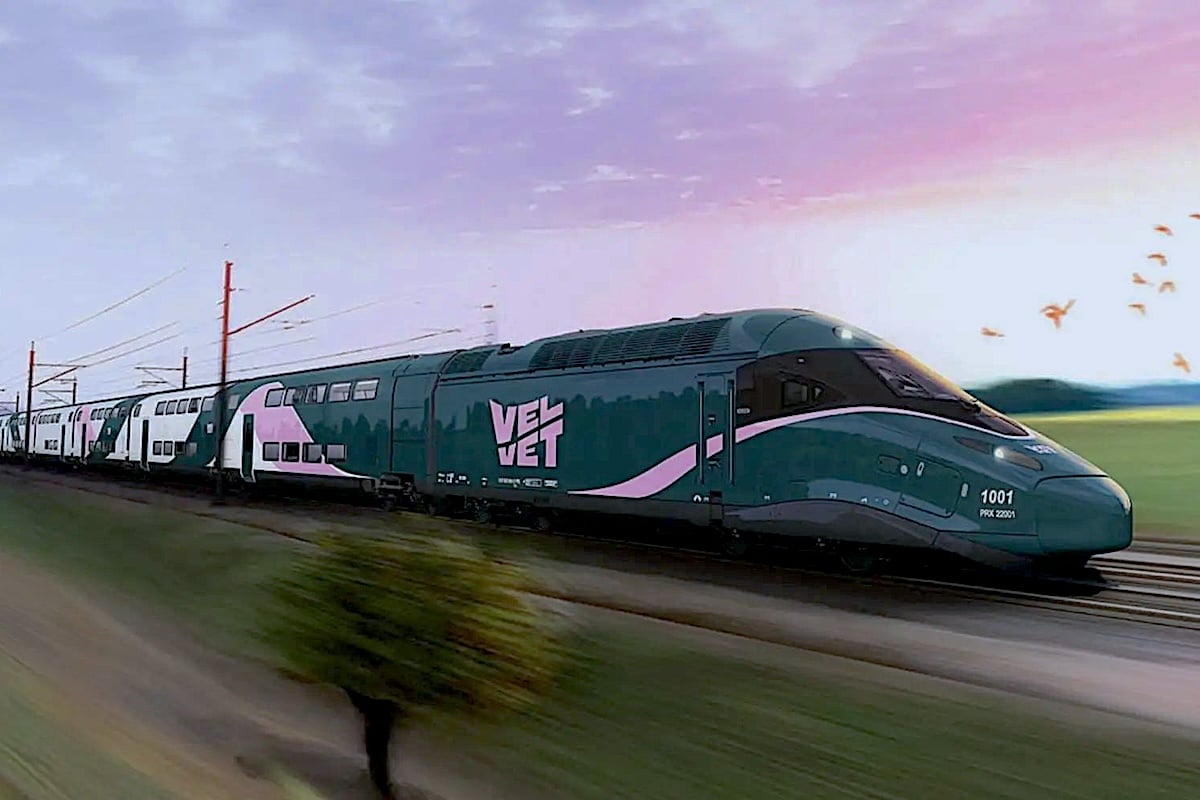What is Velvet, the French private railway company?

Velvet, the first independent company for high-speed trains, seeks to transform the rail offering in the West of France starting in 2028.
After Trenitalia and Renfe, a new player is emerging in the high-speed train sector in France. Founded by Rachel Picard, former CEO of Voyages SNCF, and Tim Jackson, former director of Eurostar, Velvet aims to provide an additional 10 million seats per year on high-speed lines. The company will primarily serve the Atlantic axis, connecting Paris to Bordeaux, Nantes, Rennes, and Angers, with travel times around 2 hours.
While the goal is clear, the philosophy is equally so: to complement the existing offering rather than compete head-on. By relieving certain lines toward Nantes, Rennes, Angers, and Bordeaux, Velvet intends to encourage a modal shift to rail, contributing to reducing greenhouse gas emissions.
You might be interestedin this article:
Velvet, record funding and cutting-edge equipment
Starting in June 2024, Velvet (then still called Proxima) raised 1 billion euros through the investment fund Antin Infrastructure Partners and several financial partners. A significant portion of this budget, 850 million euros, is allocated to the purchase of 12 Avelia Horizon trains (TGV M) from Alstom, along with a 15-year maintenance contract awarded to the Lisea technical center in Marcheprime (Gironde).
These next-generation trains will offer a capacity of 740 seats and a redesigned interior so as not to be a copy of SNCF.
This desire for differentiation is reflected in a strong visual identity: a pine green and lilac livery. The green evokes speed, modernity, and environmental commitment, while the lilac conveys softness and comfort. Together, they symbolize the alliance of technological performance and a refined travel experience.
What is the timeline for Velvet’s service launch?
In July 2025, the production of TGV began in France, coinciding with the official launch of the Velvet brand. Initial technical trials will take place in 2026, followed by the first commercial trips in 2027 and commercial operation in 2028.
At that time, Velvet and Alstom aim to deliver a complete train each month. This is an ambitious target that raises many questions.
Before successfully launching, Velvet will need to overcome several challenges, such as obtaining attractive time slots from SNCF Réseau, which is already heavily utilized on the Atlantic axis. The market, currently opening up, may also quickly become denser: even if the company positions itself as a complement, Trenitalia, Renfe, or potential new players could take up the ground by 2028. From a commercial perspective, a sufficiently competitive price-quality ratio must be offered to attract travelers, which could cut into margins in a model with significant fixed costs.
Finally, any industrial delay in the manufacture or delivery of the trains could jeopardize the scaling up and delay the start of service.
ALSO READ: Book a Singapore Airlines flight… and travel by TGV
This page is translated from the original post "Qu’est-ce que Velvet, la compagnie ferroviaire privée française ?" in French.
We also suggestthese articles:
Also read






